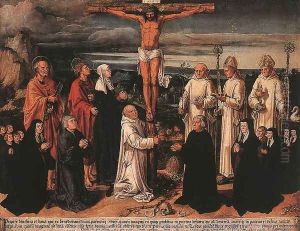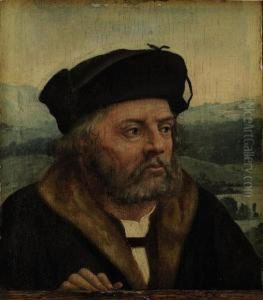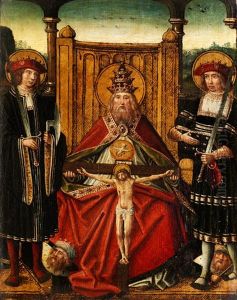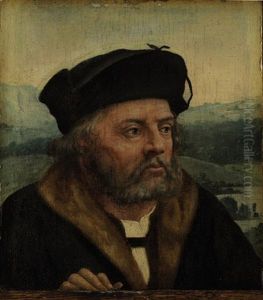Anton Woensam Von Worms Paintings
Anton Woensam von Worms, also known simply as Anton Woensam, was a German painter and woodcut artist active during the Renaissance period. Born around 1500 in Worms, a city then within the Holy Roman Empire, Woensam's early life is somewhat obscure, as is common with many artists of the time. However, his prolific body of work, particularly in the realm of woodcuts, has provided art historians with valuable insights into his artistic contributions and the cultural milieu of 16th-century Germany.
Woensam began his career in Cologne, where he is believed to have received his artistic training. Though primarily recognized for his woodcuts, he was also a talented painter, though fewer of his paintings have survived. His woodcuts, however, were widely circulated and include religious subjects, heraldic designs, and illustrations for books. One of his most significant contributions was his work on the 'Cologne Bible' of 1522, for which he produced numerous woodcut illustrations. These illustrations are notable for their detailed representation of biblical scenes and their influence on the visual culture of the Reformation.
Throughout his career, Woensam's works exhibited a keen eye for detail and a mastery of the woodcut medium. His style reflects the transition from the late Gothic to the Renaissance, blending traditional German Gothic elements with the emerging humanist and naturalistic trends of the Renaissance. This fusion is evident in his portrayal of figures and landscapes, which show an increasing awareness of spatial depth and anatomical accuracy.
Anton Woensam von Worms' contributions to art history extend beyond his technical skill and stylistic developments. His works serve as a window into the religious, social, and political changes of his time. The Reformation, a pivotal moment in European history, is vividly captured through his biblical scenes, which were used as tools for religious instruction and propaganda. Moreover, his heraldic works reflect the intricate social hierarchy and the importance of lineage and identity in 16th-century Germany.
Woensam's death in 1541 in Cologne marked the end of a career that had significantly impacted the German Renaissance's visual arts landscape. Though not as widely recognized today as some of his contemporaries, his legacy lives on through his contributions to woodcut art and the role his works played in disseminating the ideas of the Reformation. His art remains an invaluable resource for understanding the complexities of this transformative period in European history.







